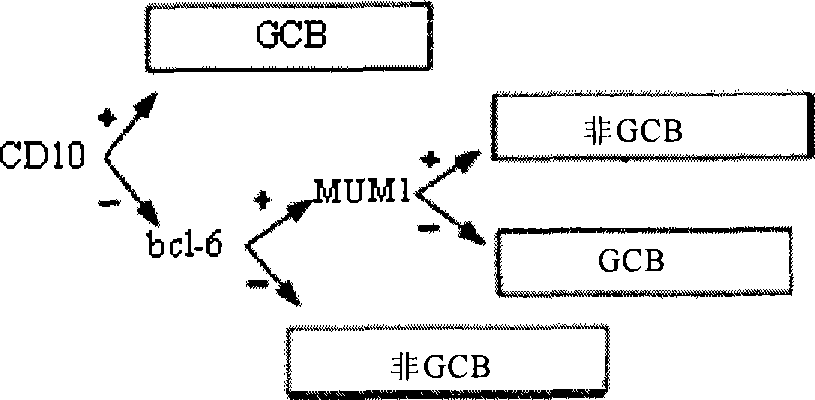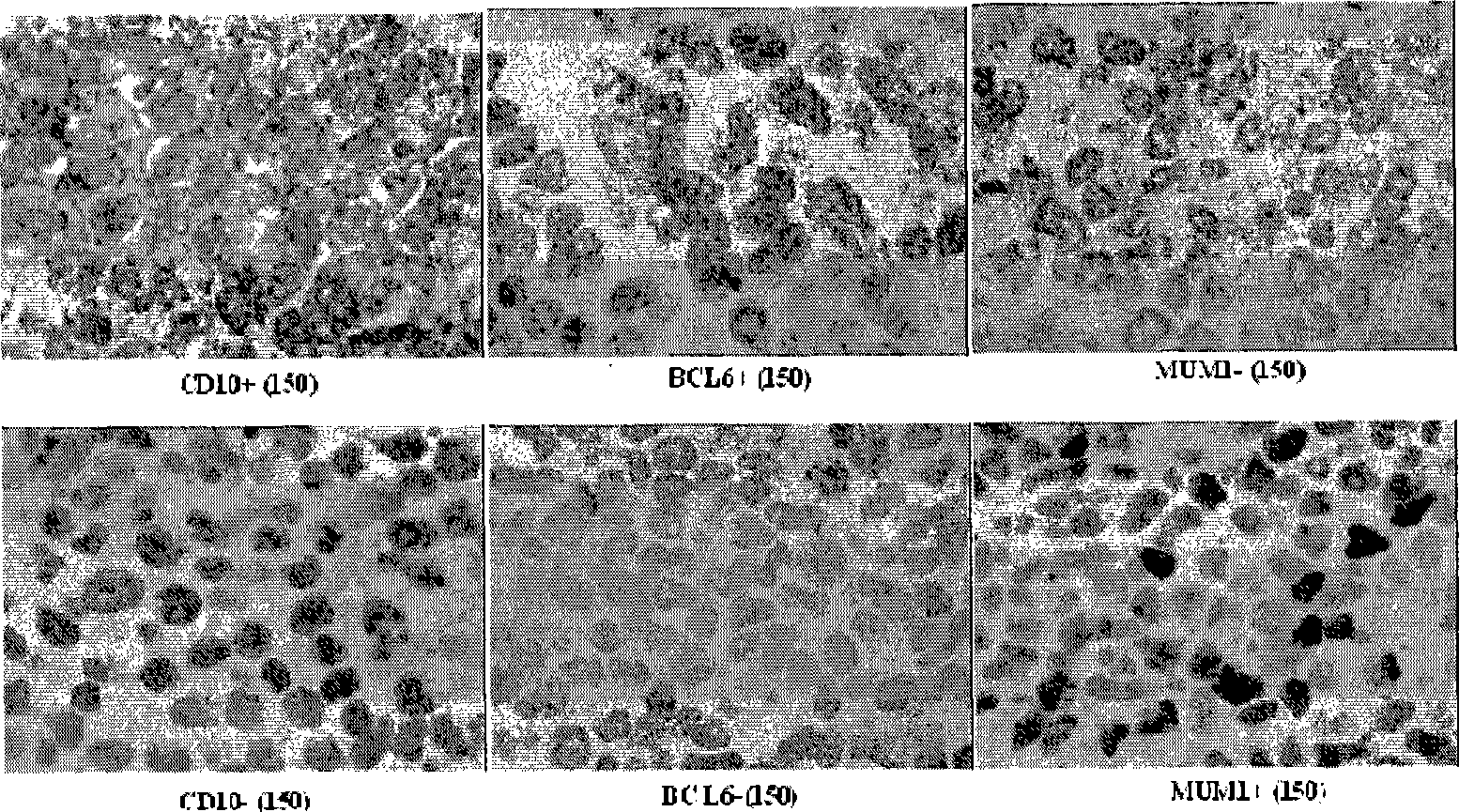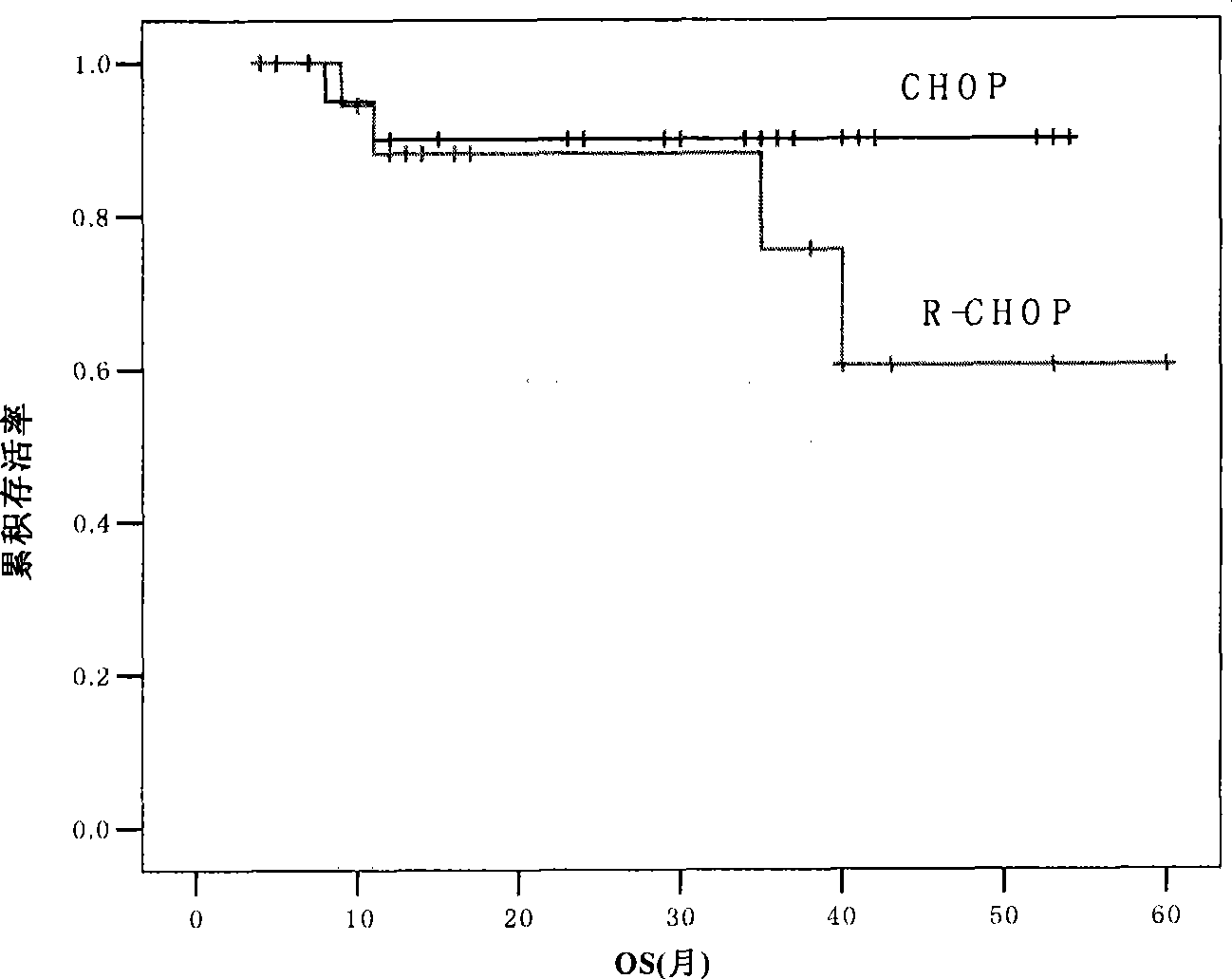Diffuse large b-cell lymphoma molecule pathological typing method and use thereof
A technology for B cells and lymphoma, applied in the field of hematology oncology and medicine, can solve the problems of high specimen requirements, complicated operation, and high cost of gene chip detection
- Summary
- Abstract
- Description
- Claims
- Application Information
AI Technical Summary
Problems solved by technology
Method used
Image
Examples
Embodiment 1
[0075] Example 1. DLBCL specimen collection, processing and detection
[0076] 1. Specimen Collection
[0077] The cases included in this study were 104 newly diagnosed DLBCL patients. All DLBCL specimens were fixed with 10% neutral formaldehyde, routinely dehydrated, embedded in paraffin, stained with hematoxylin-eosin, and diagnosed according to the new WHO classification by doctors specialized in lymphoma research.
[0078] 2. Specimen Processing
[0079] (1) Prepare tissue sections (paraffin sections are dewaxed to water, frozen sections and cell culture sheets are fixed).
[0080] (2) Antigen retrieval (microwave heating method, suitable for paraffin sections) Place the sections in a high-temperature-resistant container and inject the antigen retrieval solution Tris / EDTA (50mM Tris, 2mM EDTA, pH9.0) so that the sections are below the liquid surface. Heat in a microwave oven to keep the temperature of the liquid in the container between 92°C and 98°C for 5 minutes, take...
Embodiment 2
[0081] Example 2. Immunohistochemical detection and result determination of molecular pathological typing of diffuse large B-cell lymphoma
[0082] 1. Rinse the slices with TBS 4-5 times, shake dry, wipe clean, add 20μl 3% H 2 o 2 - Methanol solution, blocked for 30 minutes in a room temperature humid chamber.
[0083] 2. Take out the slices, rinse with TBS 4-5 times, shake dry, and wipe clean. Cover with 20 μl of blocking solution, and incubate for 30 minutes at room temperature in a humid chamber. Absorb the blocking solution with absorbent paper, do not wash, add dropwise the commercially available primary antibody working solution (CD10, purchased from Novocastra, 1:80; Bcl6, purchased from DAKO, 1:10; MUM1, purchased from DAKO , 1:40). Incubate for 1-2 hours at 37°C or overnight at 4°C.
[0084] 3. Rinse TBST 4-5 times, shake dry, and wipe clean. Add 20 μl of secondary antibody (HRP-labeled, ChemMateTMEnVision+ / HRP) dropwise, and incubate for 1-2 hours at room tempe...
Embodiment 3
[0091] Example 3. Molecular classification of patients with diffuse large B-cell lymphoma
[0092] CD10 and Bcl-6 are used as markers of germinal center cell origin, and CD10(+) or CD10(-) / Bcl-6(+) / MUM1(-) are GCBs; CD10(-) / bcl-6(- ), which are non-GCB categories. MUM1 is used as a marker of the origin of post-germinal center cells. If CD10(-) / bcl-6(+), MUM1 is used to classify: MUM1(+) is non-GCB, and MUM1(-) is GCB (see figure 1 and figure 2 ), that is, CD10(-) / bcl-6(+) / MUM1(+) is non-GCB, and CD10(-) / bcl-6(+) / MUM1(-) is GCB.
[0093] According to the molecular typing method, and according to the immunohistochemical test results in the foregoing examples, among the collected 104 cases of newly diagnosed DLBCL patients, 42 cases were classified as GCB type patients, and the remaining 62 cases were non-GCB type patients.
PUM
 Login to View More
Login to View More Abstract
Description
Claims
Application Information
 Login to View More
Login to View More - R&D
- Intellectual Property
- Life Sciences
- Materials
- Tech Scout
- Unparalleled Data Quality
- Higher Quality Content
- 60% Fewer Hallucinations
Browse by: Latest US Patents, China's latest patents, Technical Efficacy Thesaurus, Application Domain, Technology Topic, Popular Technical Reports.
© 2025 PatSnap. All rights reserved.Legal|Privacy policy|Modern Slavery Act Transparency Statement|Sitemap|About US| Contact US: help@patsnap.com



